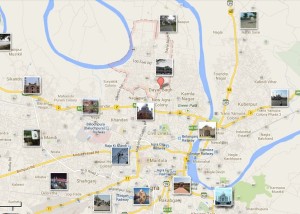Dayalbagh- the Garden of the Merciful has a land expanse of about 1500 acres located in the North of the city of Agra and bounded on the North and West by the river Yamuna. In a city, which is witnessing a burst of housing colonies and shopping areas and where the roads are full of carbon spewing vehicles, the colony of Dayalbagh is clearly playing the role of the Lungs of this heritage city. It has embraced the use and generation of clean energy in a big way- Solar Energy, naturally, becomes the prime resource in this context.
Demographics
Climate of Dayalbagh
The climate in Dayalbagh offers great variations season to season, with extremely hot weather, periods of heavy rainfall and cooler spells during the winter months. It features a semi-arid climate that borders on a humid sub-tropical climate. The weather in Dayalbagh is quite diverse throughout the year. Summer (March to July) is very long and extremely hot at times, with average temperature hitting a maximum of over 43°C during the months of May and June. A heavy rainfall is witnessed during the monsoon months (July to September).
History
Traditional knowledge Practices in Dayalbagh
Click on below buttons and Download PDF files for more details in this context.
Introduction Agra
Introduction Dayalbagh
History of Dayalbagh
Reference
